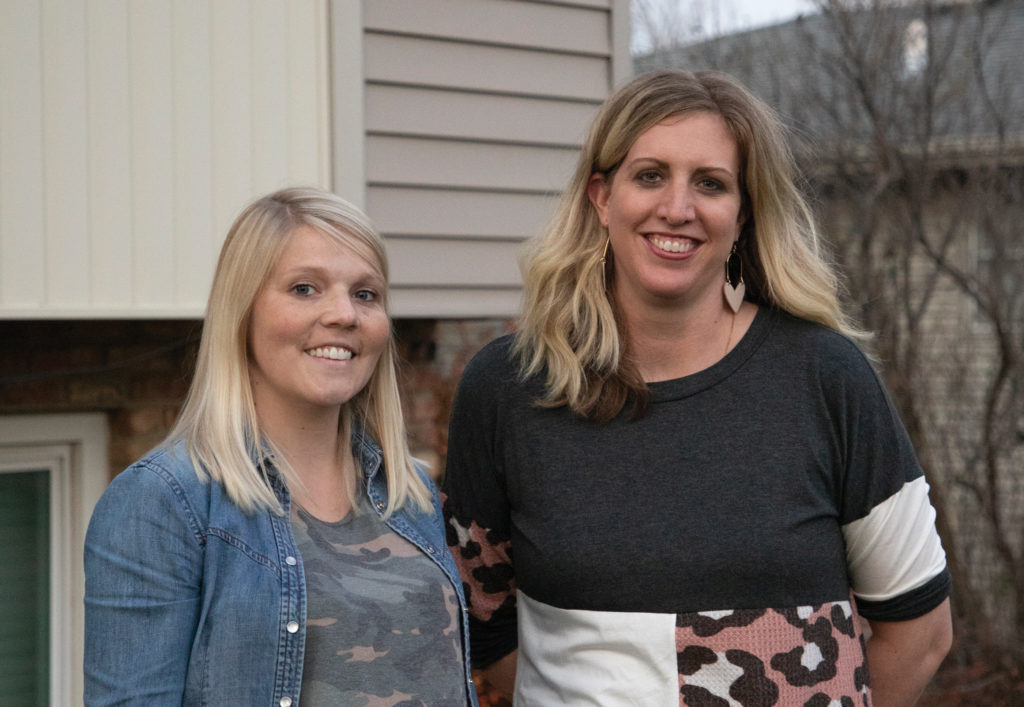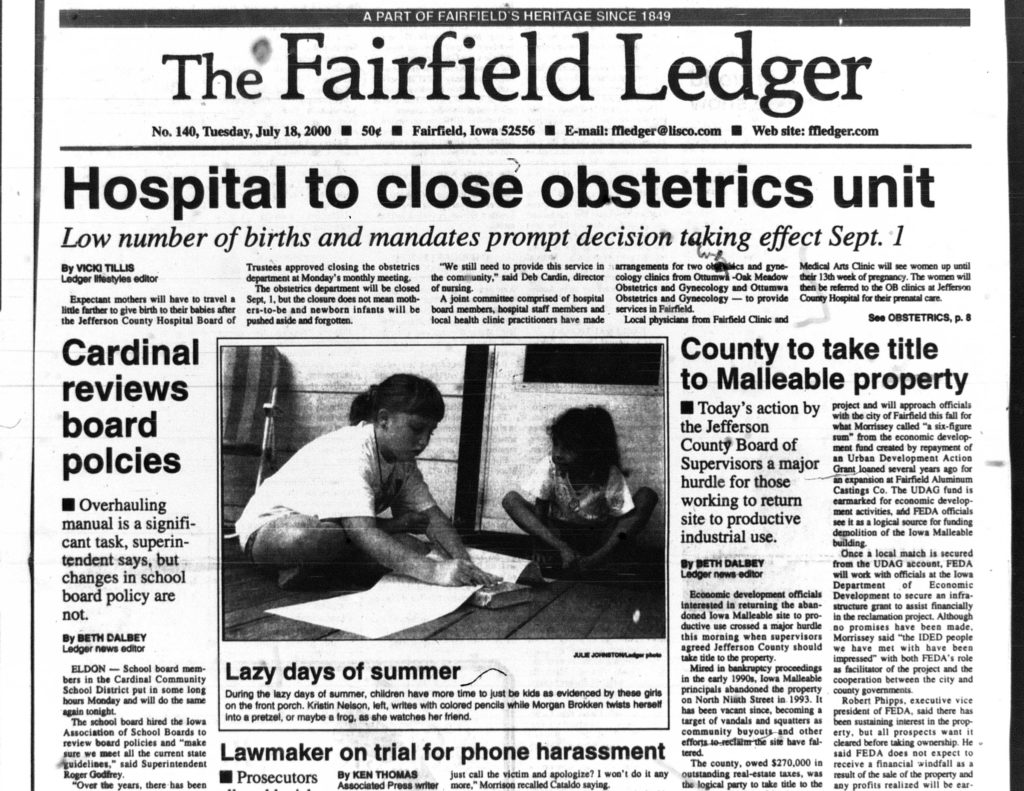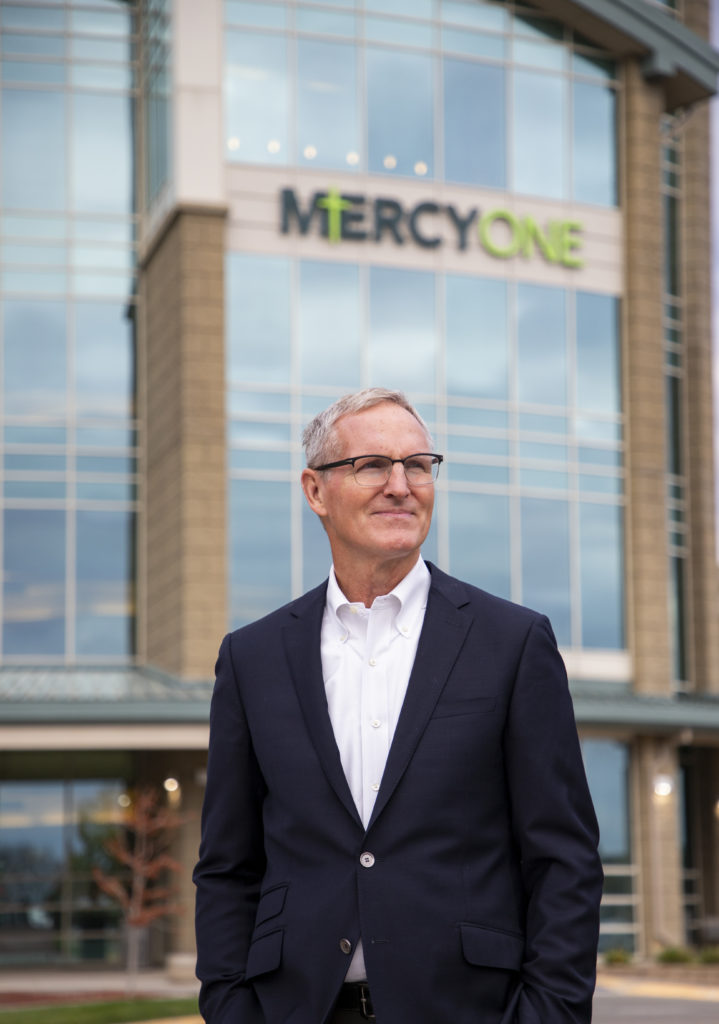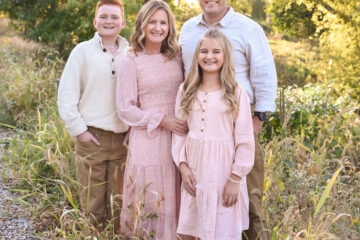By Sarah Bogaards, Business Record staff writer
Editor’s note: This is a three-part series that focuses on the closure of birthing units in Iowa, the factors driving the trend and how it is changing maternal health care in Iowa. Part one looks at the overall problem, part two explores a couple of communities that have lost a birthing unit in the past two decades, and part three looks at potential solutions.

PART ONE: Communities, hospitals and doctors seek solutions amid Iowa’s changing maternal health and economic landscapes that drove the loss of 40 birthing units since 2000.
Angie Pietig had positive experiences delivering her two daughters at the UnityPoint Health-Marshalltown birthing unit in 2009 and 2014. Both were born in the hospital with no complications, and she would have delivered her son there as well if not for a high-risk condition she developed.
Learning the unit would close in 2019 made Pietig sad, less for herself as she was not having more children, but more for the community.
A teacher at Franklin Elementary, which is located just down the street from the hospital, she said the closure takes away the convenience of having services available locally. When she was pregnant with all three of her children, she would always schedule her prenatal appointments right after school or over the lunch hours.
The community connection created by the unit would be missed as well, Pietig said. She recalls attending first-time parenting classes offered by the hospital every Monday night with her husband and newborn daughter, and receiving a gift from a nurse the night her second daughter was born.
With the unit gone, Pietig said she was unsure how her friends would adapt.
“I felt concerned for some of my friends … who are still adding to their families and where they’re going to have to go for care,” she said.
One of those friends is Dani Minkel. She also works at Franklin, but as a school counselor, and is expecting her third child in December.
Minkel’s experiences mirror Pietig’s — the deliveries of her two daughters in 2014 and 2018 at the hospital both went smoothly. But her next delivery will be in the Des Moines metro area.
She was frustrated by the closure in Marshalltown as she contemplated driving two hours round-trip for a 10-minute prenatal checkup and the potential need for emergent care with only the hospital’s ER available to help locally.
She said the news made her think: “How can a town of 30,000 people go without this medical service?”
READ THE REST OF PART ONE

PART TWO: Two communities share the experience of closing their units and how they adapted
When the Fairfield Ledger, the town’s local newspaper, shared the news in July 2000 that families would no longer be able to deliver their children at Jefferson County Health Center, the community wasn’t aware that this closure would be just the start of a series of birthing unit shutdowns across the state in the next 20 years.
Dr. Curtis Smith was the hospital’s emergency department manager at the time and is currently the chief operating officer.
He said when hospital leaders announced to department managers their intention to close the obstetrical unit around late 1999, the birthing unit was battling the leading cause of closures: not enough births. There were only 50 births in the unit in 1999, the Ledger reported in the news story of the closure.
Family practice providers performed all the deliveries, and they were relieved by the closure, Smith said, because with so few births, concerns about providing a high quality of care arose.
“We just felt it [was] getting to a point where it’s harder and harder to stay proficient, and we didn’t want to have a bad outcome for a baby or a mom. We just recognized this wasn’t one of our strengths, and this wasn’t a direction as an older county that we needed to focus on,” Smith said.
READ THE REST OF PART TWO

PART THREE: Regional models for maternal health care can be successful, but Iowa doctors say an intentional effort is needed to reach the entire state
Fairfield, Marshalltown and dozens more cities are working through birthing unit closures and the effects of Iowa’s shifting health and economic landscapes.
And rather than having every community work independently on the same challenges, Dr. Stephen Hunter, co-director of the Statewide Perinatal Care Program, said an effort is needed that connects the whole state and recognizes how changes in one community after another quickly become systemic.
Hunter said traveling providers are an important resource in communities without a birthing unit. But if the trend of closures continues, it can contribute to having even fewer providers and would place the onus on the remaining workforce to deliver access to care to more of the non-urban regions of the state.
In order to adapt to the consolidation that’s already occurred in Iowa’s health care industry, he thinks a “hub-and-spoke” model will be the way forward for Iowa. It resembles the model that areas like Fairfield and Marshalltown are already using, but is filled out more to close any gaps.
READ THE REST OF PART THREE

RELATED: Could maternal-fetal telehealth be one solution to keep more birthing centers open in Iowa?
The idea to convert some in-person maternal and fetal medicine clinics to telehealth visits had been percolating for a while. But it was ultimately a blizzard in February that prompted the team at MercyOne Des Moines to put the idea into action.
Dr. Neil Mandsager, who is board-certified in obstetrics-gynecology and maternal-fetal medicine, has been providing maternal-fetal medicine outreach to various Iowa communities since the mid-1990s, specializing in providing support to local care teams for high-risk pregnancies. He consults on cases where the patient might have high blood pressure, diabetes, previous problems with pregnancies or other medical problems, as well as providing fetal surveillance via ultrasounds.
“The first place that I went to was Mason City — and so I’ve been going in person to Mason City, twice a month, and running perinatal outreach clinics for a long time,” Mandsager said. “I’ve also been to Ottumwa for a period of time doing the same thing … once a month. Pella I’ve been doing for quite a while.”
READ THE REST OF THE STORY
To see the print version of these stories, visit the Business Record’s website. For more stories like this, sign up for our free weekly Fearless newsletter, which features stories about women’s and gender issues.


